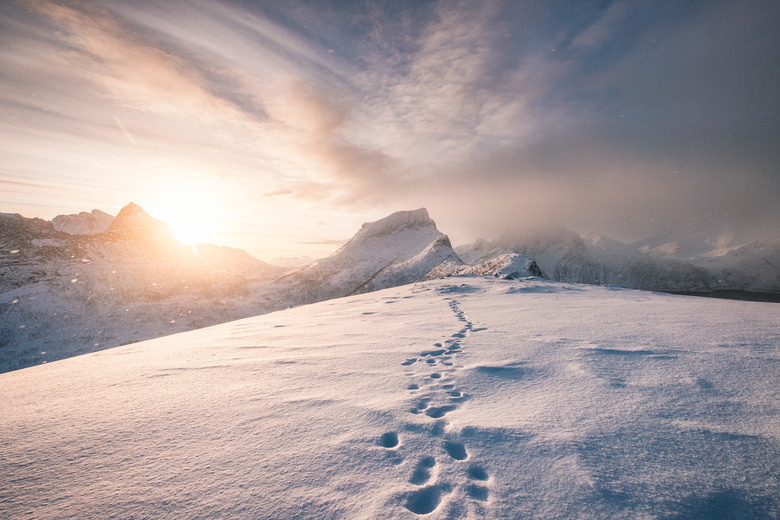Information On The Polar Zone
Generally speaking, scientists consider the three distinct climactic regions of Earth to be the tropic zone, the temperate zone and the polar zone. The tropics straddle the equator from 23.5 degrees south to 23.5 degrees north latitude and the temperate zones extend from 22.5 to 66.5 degrees north and south latitude. The regions that extend from 66.5 degrees north and south latitude to the North and South Pole respectively are the polar zones. Within each polar zone are two distinct sub-regions, the ice cap and the tundra.
The north and south polar regions are very different. The north is dominated by the Arctic Ocean, and it is dotted by islands belonging to several different nations. On the other hand, the huge landmass that is the continent of Antarctica – which belongs to no one – occupies most of the south.
The Lands of the Midnight Sun
The Lands of the Midnight Sun
Because of the 23.5-degree tilt of the Earth as it orbits the sun, both polar regions experience long, cold winters during which the sun never rises above the horizon. In the summer, however, the opposite is true – the sun never sets. It would seem to make sense that the summers should get very hot at the poles, because at that time they are actually closer to the sun than any other region on earth. That isn't what happens though, because the polar regions don't actually receive direct sunlight, even in summer.
The average summer temperature in the northern polar lands is 32 °F (0 °C) and in the south it's −18 °F (−28.2 °C). Winter temperatures in the north polar zone average −40 F (−40 °C) while those in the south polar zone are a frigid −76 °F (−60 °C). The north is warmer because of the moderating influence of the Arctic Ocean. Besides being primarily a landmass, the south polar region also has an average elevation of 7,500 feet (2,500 meters), which makes it even colder.
Antarctic and Arctic Animals
Antarctic and Arctic Animals
The most iconic Arctic animal has to be the polar bear, with its white fur camouflaging it against the ice and snow. No polar bear has ever seen a penguin, which is another iconic polar creature, and the reason is that penguins inhabit the south pole, which is as far apart as animals can get.
Virtually all arctic animals live in the tundra, which are vast treeless grasslands. Many of these animals, such as the arctic fox, arctic wolf and arctic hare, sport the same white fur as the polar bear, but many don't. Examples include reindeer, moose and caribou. Many birds, such as the puffin, snow goose and snowy owl live in the arctic tundra, and many fish, whales and seals ply the waters and bask on ice floes.
Because most of Antarctica is covered by ice year round, not many animals and birds are able to live there all year – except for penguins. Many birds, such as albatrosses, terns and petrels, migrate there in the summer, as do a variety of seals. The main year-round inhabitants are krill, the tiny sea invertebrates that are the number one menu item for all the larger animals.
Gaining Information about a Polar Region
Gaining Information about a Polar Region
The northern polar regions have been inhabited for centuries, and native folklore contributes much to the knowledge scientists have about these regions. The southern polar lands, however, are uninhabited. An expedition led by Norwegian explorer Roald Amundsen became the first to reach the South Pole in 1911, and today, a number of countries, including the United States, Russia, Great Britain and Argentina maintain outposts there. They monitor weather conditions while doing geological, biological and environmental studies.
Cite This Article
MLA
Deziel, Chris. "Information On The Polar Zone" sciencing.com, https://www.sciencing.com/information-polar-zone-5647016/. 22 November 2019.
APA
Deziel, Chris. (2019, November 22). Information On The Polar Zone. sciencing.com. Retrieved from https://www.sciencing.com/information-polar-zone-5647016/
Chicago
Deziel, Chris. Information On The Polar Zone last modified March 24, 2022. https://www.sciencing.com/information-polar-zone-5647016/
